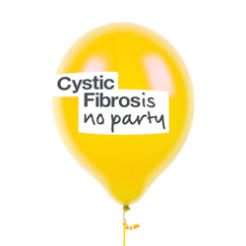The world is changing ever more rapidly, making innovation in fundraising a must, writes Lucy Gower.
We raise money for urgent and important work and we do this in a tough economic environment. If that wasn’t enough, the needs of individuals are also changing as advances in technology provide us with more choice about how we spend our time and money as well as how we communicate. Who knows what the next big thing will be? We can only make informed guesses. The world has never changed so quickly, nor will it ever change so slowly again.
Einstein said: “Insanity is doing the same things and expecting different results.” If we are not responding to the increasing pace of change, if we are not developing products and services that meet the changing needs of our supporters and beneficiaries, we will fail to deliver on the urgent and important work that we exist to do.
That is why innovation in charity fundraising is not just a buzzword and nor is it something that is just ‘nice to have’, it is essential. It is not something that we can put off until we are ready, when we have the right team in place, when we have completed next year’s budgets or when we have some time to think.
Innovation is urgent and important. To be successful the first step is to be absolutely clear on what we are innovating for. The best innovators spend considerable time focusing on the problem before they seek to find solutions.
For charities, this means going back to the reason you were set up. The Cystic Fibrosis Trust is 50 this year. They seized this birthday year, not as a reason to celebrate, but as an opportunity to reconnect with the hard truth; that people with cystic fibrosis die before their 50th birthday. Their campaign ‘Cystic Fibrosis is no party’ communicates the key message that they will not celebrate being 50 until everyone can.
It has focused the charity back on its core purpose, to beat cystic fibrosis. Everything it does is working towards that outcome. When you are absolutely focused on and connected to your purpose, it makes it much easier to say no to the ideas and activities that do not help you get there. Great innovators also know that their new idea is unlikely to be welcomed with open arms.
Inspiring people to solve problems
An idea is just a starting point. Then the hard work begins to help other people understand and get excited about the potential of the new idea. The secret to finding ideas to bring to market is not to rely on innovation processes, idea pipelines, business cases and risk registers. These can beat the passion and inspiration out of ideas. The secret is to inspire people and connect them with ideas that have the potential to solve their problems.
This relies on creating a culture where people are focused on their problems and inspired to have ideas to solve them. In this environment, leaders give staff permission to seek inspiration from outside the organisation and provide time to let ideas percolate. They encourage continuous testing on a small scale, then learning and adapting until the idea succeeds, like the Children’s Society did in Newcastle last year with its approach to street fundraising; Geordie Magic that used magicians and card tricks to attract the crowds.
The core skills of great fundraisers and great innovators are interchangeable. They are both great listeners, taking time to identify problems and understand their audiences. They are super connectors, connecting individuals and ideas through storytelling, they are curious and find inspiration from unlikely places. They constantly test, adapt, learn and share their experiences - including failures - but most importantly they are also absolutely focused on solving the urgent and important problem that is their core purpose.
Lucy Gower and Jacob Rolin will be delivering two sessions on emotional innovation at the Resource Alliance’s International Fundraising Congress in the Netherlands, 14-17 October. This year's theme is inspire, connect and transform.









